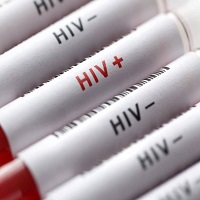Post-hoc analysis shows that the efficacy of the 2-drug regimen was comparable to 3-drug therapy in individuals with low baseline CD4 counts, regardless of baseline viral load
ViiV Healthcare, a majority-owned global HIV company GlaxoSmithKline plc (“GSK”), in partnership with Pfizer Inc. and Shionogi, today announced 48-week results from the DOLCE study, sponsored by Fundación Huésped and the Bahiana Foundation of Infectiology, showing that the 2-drug DTG/ 3TC (dolutegravir/lamivudine) achieved similar results to 3-drug therapy in viral suppression in a population of adults with advanced HIV. A post-hoc analysis of the study showed that DTG/3TC was non-inferior to 3-drug therapy, regardless of the participant’s baseline viral load. These data were presented at the international HIV congress Glasgow 2024, which was held in Glasgow, Scotland, from 10 to 13 November 2024.
Harmony P. Garges, Chief Medical Officer of ViiV Healthcare, said: “We know that taking fewer medications is an important consideration for many in the HIV community, and these new data continue to strengthen the efficacy and safety of DTG/3TC, a 2-drug regimen. The DOLCE study results add to a solid body of evidence supporting the use of DTG/3TC in treatment-naïve adults living with HIV and showing comparable efficacy to a 3-drug regimen, even in people with low CD4 counts and high viral loads.”
DOLCE is a randomized, open-label, multicenter study evaluating the efficacy and safety of DTG/3TC in 230 people with advanced HIV (low CD4 count [≤200 cellule/mL]) antiretroviral treatment (ART) naïve 1. In the clinical trial, participants were randomized in a 2:1 ratio to receive DTG/3TC (n=152) or DTG+TDF/XTC (n=77). Participants’ baseline characteristics were similar between the two treatment groups and represented a population of people with severe immunosuppression: 43% of participants had a baseline CD4 count less than 100 cells/mL, 61% had a viral load (VL ) at baseline greater than 100,000 copies (c)/mL, and 23% had a very high baseline VL greater than 500,000 copies (c)/mL.
The primary endpoint of the study was the proportion of subjects whose VL was non-inferior to the 3-drug regimen in achieving a VL
Prof. Pedro Cahn, Scientific Director of the Fundación Huésped and researcher of the DOLCE study, declared: “It is encouraging to see additional new data continuing to support the efficacy and safety of 2-drug regimens compared to traditional 3-drug regimens. The DOLCE results provide healthcare providers with greater confidence in prescribing DTG/3TC and are important findings for people living with HIV who take drugs to suppress the virus.”
A post-hoc analysis reported that DTG/3TC was non-inferior to 3-drug therapy (adjusted risk difference 2.0%, 95% CI -8.6, 12.8%).1 The study also demonstrated that secondary efficacy measures of viral load decline, time to viral suppression, and CD4 recovery were similar between arms. Efficacy by baseline viral load categories was similar in both arms, including those with baseline viral loads greater than 500,000 copies, with 74% in the DTG/3TC arm and 67% in the DTG+TDF/XTC arm achieving have achieved virological success. The change in median CD4 count from baseline to week 48 showed an increase of 200 cells/mL in the DTG/3TC arm and an increase of 177 cells/mL in the triple therapy arm.
Safety through week 48 was comparable in both arms and consistent with known safety profiles and showed similar rates of serious adverse events (SAEs) and immune reconstitution inflammatory syndrome between the arms. The discontinuation rate in both arms was also similar (DTG/3TC = 12.8%; DTG+TDF/XTC = 6.8%).
Regarding Studio DOLCE
The DOLCE randomized clinical trial (NCT04880395) is a phase IV, open-label, multicenter clinical trial evaluating the efficacy of DTG/3TC for the treatment of HIV-1 in treatment-naïve adults aged 18 years and older with CD4+ T cell count ≤200 c/mm3 and HIV-1 RNA >1,000 copies/mL without known resistance to ART or co-infection with HBV, conducted at 11 sites in Argentina and Brazil. The primary endpoint was the proportion of participants with plasma HIV-1 RNA

